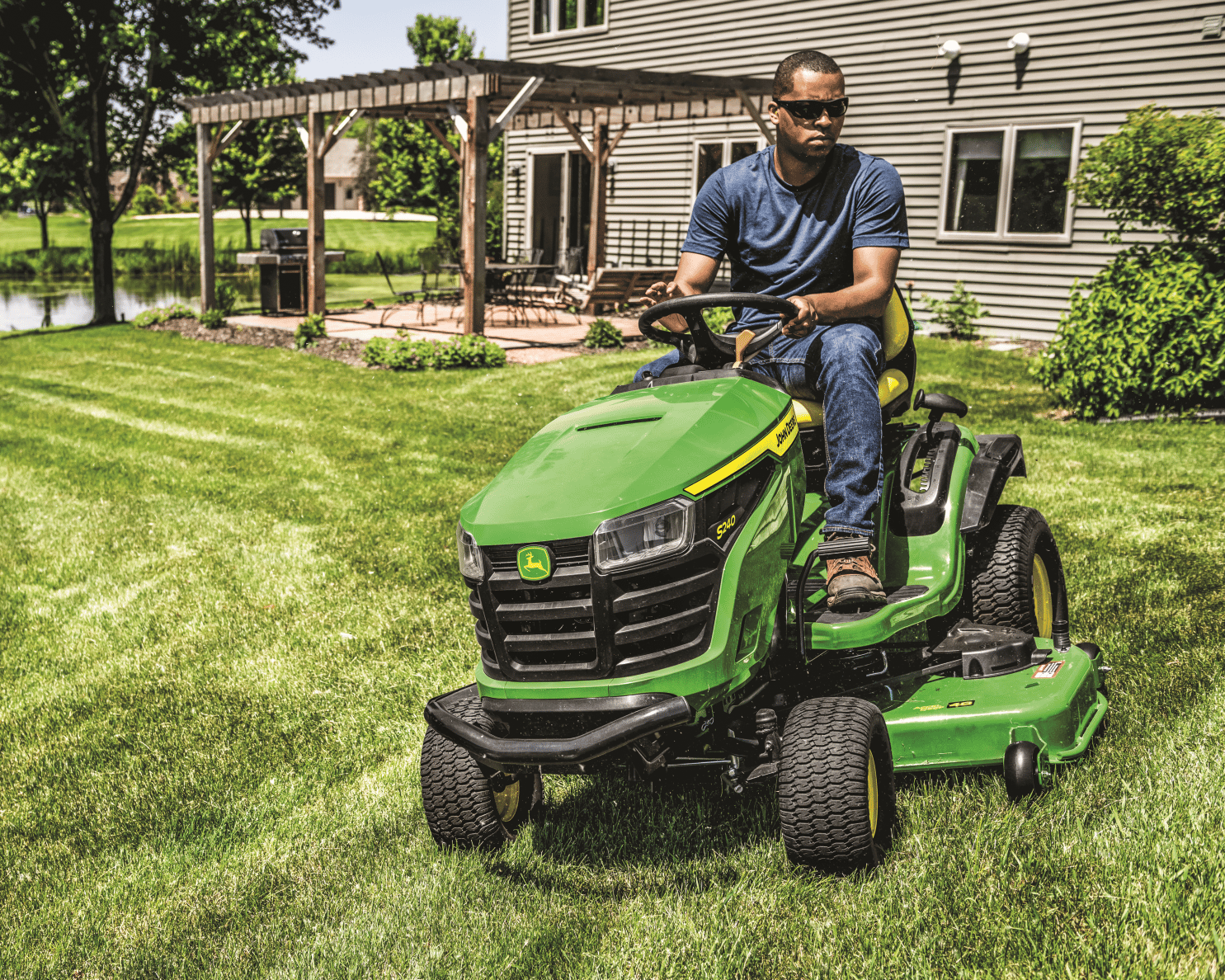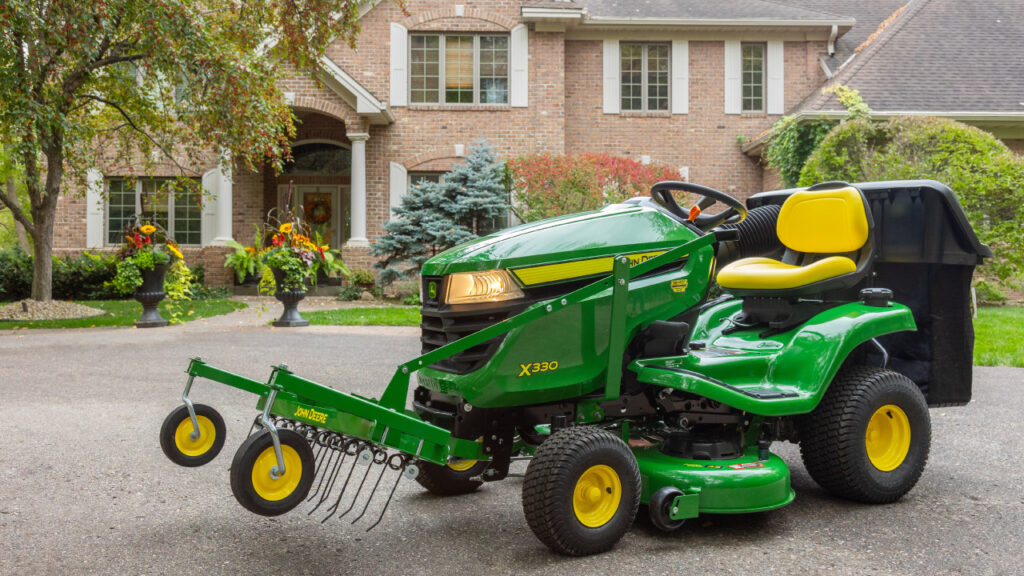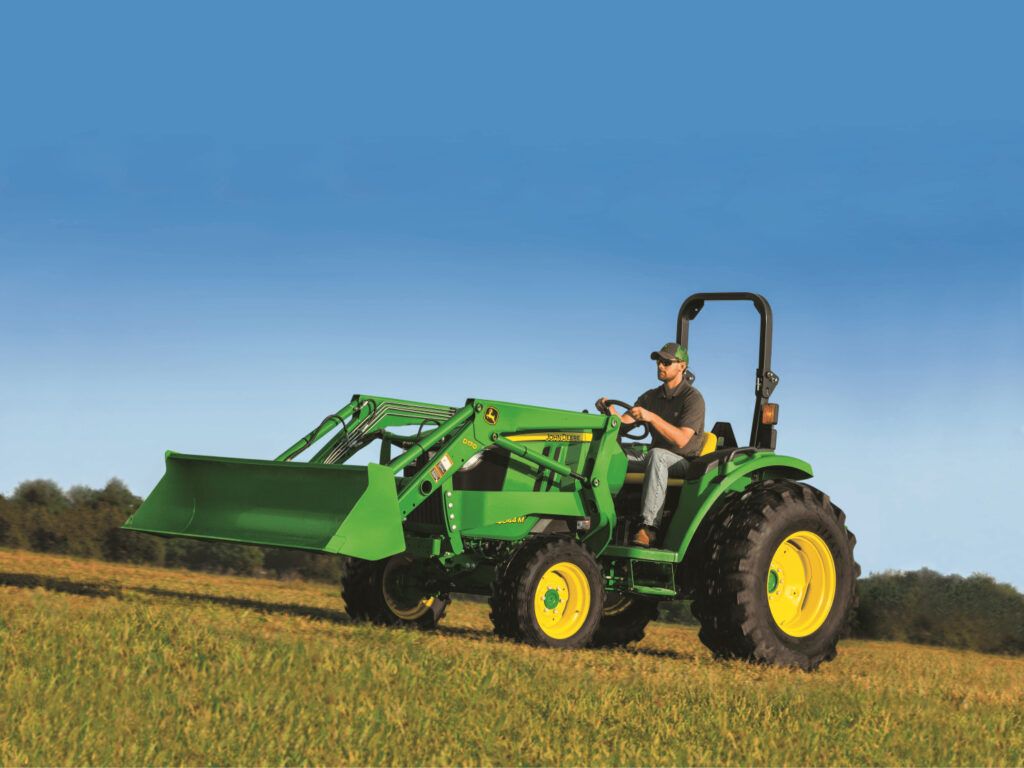
When Heat Becomes Hazardous
When heat index values climb above 90°F, outdoor work becomes more than uncomfortable—it becomes dangerous. Heat exhaustion symptoms can develop fast, and equipment exposed to high temps can overheat, stall, or even ignite dry grass nearby.
This guide covers what every smart operator should know about working outside in heat—how to take care of yourself, protect your machines, and reduce fire risk during Minnesota’s hottest days.
Safety Starts with You
Know the Basics:
- Drink 8 oz of water every 15–20 minutes—even if you’re not thirsty
- Wear light-colored, breathable clothing and a wide-brimmed hat
- Rest 15 minutes every hour in shade or cool areas
- Watch for heat exhaustion symptoms: fatigue, nausea, dizziness, headache, or heavy sweating
Recognize Serious Heat Illness
Heat exhaustion is serious but treatable. Stop work and cool down if you notice:
- Heavy sweating
- Muscle weakness or fatigue
- Nausea, dizziness, or lightheadedness
- Fast heartbeat
Move to shade or A/C, elevate your feet, drink water slowly, and use cold compresses.
Heat stroke is life-threatening. Call 911 immediately if someone has:
- Confusion or slurred speech
- Unconsciousness or seizures
- Very high body temp
- Hot, dry skin (sweating stops)
Never leave someone alone if they’re showing signs of heat stroke.
Staying Cool While Working Outside in Heat
Hydration Strategy
Start hydrated and sip steadily. Include sports drinks or electrolyte fluids if working more than two hours. Skip coffee and energy drinks—they worsen dehydration.
Smart Clothing
Wear moisture-wicking long sleeves and light-colored pants. Use high-SPF sunscreen, UV-protective eyewear, and a wide-brimmed hat that shades your face and neck.
Cooling Gear
Keep cooling towels, bandanas, and spray bottles on hand. Dampen your shirt or neck wrap for quick evaporative relief. Cooling vests with gel inserts are great for long sessions.
Time Your Tasks
Plan tough jobs early or late. Avoid heavy work from 10 a.m. to 4 p.m. Use shade breaks and a buddy system. Set a hard stop when heat index passes 105°F.
Protecting Equipment in Extreme Heat
Machines feel the heat just like you do. Protect performance—and prevent fires—with smart daily habits.
Prevent Overheating:
- Clean cooling fins, air filters, and engine vents often
- Use fresh fuel and change oil early during heat waves
- Don’t overfill gas tanks—leave space for expansion
- Idle or shut off equipment for cooling breaks
- Never refuel a hot engine
Watch for Overheat Warnings:
- Temp gauge in the red
- Loss of power
- Burning smells or steam
If you see any of these signs, stop immediately and let the machine cool.
Fire Prevention Starts with Clean Equipment
Hot engines and dry debris are a risky mix.
- Clean mower decks, mufflers, and engine compartments daily
- Don’t run over dry grass during extreme heat or drought
- Never park hot equipment near dry vegetation or wooden structures
- Sharpen blades and check spark arrestors—dull blades can throw sparks
After each job, brush or blow off dust, grass, and leaves.
Fuel and Battery Safety in Heat
- Use approved venting fuel cans
- Don’t store gas in hot vehicles or sealed trunks
- Store fuel in shaded, ventilated spaces
- Let batteries cool before charging—charging hot batteries shortens life and can be dangerous
Hot Surfaces = Burn Hazards
Touch-test before operating. Metal engine guards, seats, and handles can burn bare skin.
- Wear gloves when handling recently used gear
- Cover black vinyl or plastic seats with a towel
- Let hot engines cool before maintenance—never remove radiator caps when hot
Know When to Stop
Use good judgment. If you’re feeling weak, dizzy, or stop sweating, it’s time to quit—no job is worth pushing past your limit.
Likewise, if a machine gives any sign of distress (smoke, overheating light, unusual smell), stop work and inspect. Don’t risk permanent damage—or a fire.
Get Equipped for Safer Summer Work
Whether you’re scheduling preventative maintenance, looking for new equipment better suited to heat, or just need advice, the team at Minnesota Equipment is ready to help.
Stop by for equipment service, explore parts and supplies, or find a location near you.
FAQs: Equipment Safety in High Heat
How much water should I drink?
About 8 oz every 15–20 minutes. Use electrolyte drinks for long sessions.
What are the signs of heat exhaustion?
Heavy sweating, nausea, dizziness, weakness, and a fast heartbeat.
What’s the difference between heat exhaustion and heat stroke?
Exhaustion = cool down and rest. Stroke = call 911 immediately.
When should I stop mowing?
If heat index exceeds 100°F or you notice signs of heat stress.
How do I prevent overheating in mowers?
Keep filters and fins clean, use fresh fuel, check oil, and allow rest breaks.
Can I refuel a hot engine?
No—always let it cool completely to avoid ignition risk.
What causes summer equipment fires?
Dry grass near hot mufflers, fuel leaks, overworked engines, and blade sparks.


 MyME
MyME



